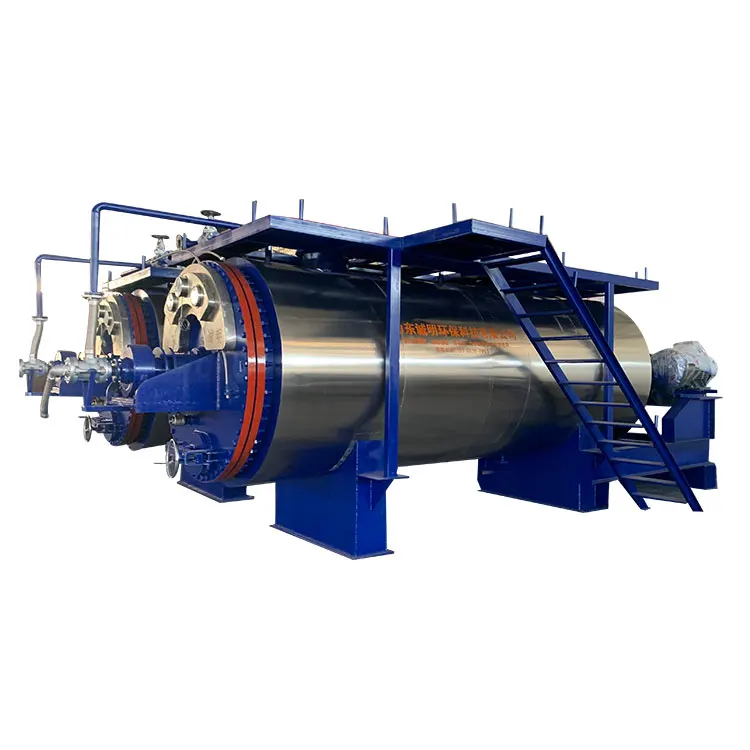Understanding Hydrolyzed Feather Powder Processing Equipment and Its Role in Sustainable Industries
2025-01-10
In recent years, industries have made significant strides toward sustainability, finding innovative ways to recycle waste and reduce environmental impact. One such advancement is the processing of feathers—a byproduct of the poultry industry—into valuable hydrolyzed feather powder. This powder has numerous applications, particularly in animal feed, fertilizers, and as an additive in cosmetics or pharmaceuticals. However, transforming raw feathers into a usable product requires specialized equipment.
In this blog, we’ll explore what hydrolyzed feather powder processing equipment is, how it works, and why it’s crucial for various industries, especially in the context of sustainable practices.
What is Hydrolyzed Feather Powder?
Hydrolyzed feather powder is produced by breaking down keratin, the primary protein found in feathers, into smaller, more digestible forms. This process typically involves the application of high-pressure steam or chemicals that break down the tough, fibrous nature of feathers into smaller molecules, making them easier to process and use. Hydrolyzed feather powder is rich in amino acids and proteins, making it a valuable ingredient in animal feed, plant fertilizers, and even in certain cosmetic formulations.
How Does Hydrolyzed Feather Powder Processing Work?
Hydrolyzed feather powder processing involves several steps, each requiring specialized equipment:
1. Feather Collection and Preparation
The first step in the process is collecting raw feathers, typically a byproduct of poultry farming. These feathers are cleaned and prepared to remove contaminants and non-keratin substances. This preparation is vital for ensuring the quality of the final hydrolyzed feather powder.
2. Hydrolysis Process
Hydrolysis is the key step in converting the feathers into a usable form. This process typically uses high-pressure steam or chemical treatments (like sulfuric acid or enzymes) to break down the keratin protein into smaller peptides and amino acids. The equipment used for this step includes high-pressure autoclaves or reactors designed to apply the right conditions of heat, pressure, and chemicals to break down the keratin structure effectively.
3. Separation and Filtration
After hydrolysis, the liquid mixture needs to be separated from the solid residues. This is typically done using centrifuges or filtration units. These machines separate the water-soluble proteins and other nutrients from the remaining keratin residue, which may be further processed or discarded depending on the desired application.
4. Drying
The hydrolyzed feather material is then dried to remove any excess moisture. The drying process can involve methods like spray drying, freeze drying, or belt drying, depending on the specific needs of the final product and its intended use. Drying is essential to prevent microbial growth and to stabilize the product for storage and transport.
5. Grinding and Powdering
Once dried, the hydrolyzed feather material is ground into a fine powder using industrial mills or grinders. The result is a powdered form of hydrolyzed feather that can be used as a supplement in animal feed, as an ingredient in fertilizers, or even as a protein source in some food or cosmetic products.
Applications of Hydrolyzed Feather Powder
1. Animal Feed
Hydrolyzed feather powder is rich in amino acids and proteins, making it an excellent supplement for animal feed. It can be used in poultry, aquaculture, pet food, and livestock feed to provide essential nutrients that promote growth and health.
2. Fertilizers
Feather powder, due to its high nitrogen and protein content, can also be used as a natural fertilizer. It serves as a slow-release nitrogen source, enriching the soil and promoting plant growth.
3. Cosmetics and Pharmaceuticals
The amino acids in hydrolyzed feather powder are also used in cosmetics and pharmaceuticals as ingredients in creams, lotions, and even wound-healing products. The protein's ability to bind moisture makes it an excellent hydrating agent in beauty products.
4. Sustainable Materials
The environmental benefit of hydrolyzed feather powder processing is also notable. By utilizing a waste product (feathers), companies can reduce waste in the poultry industry while creating a valuable commodity.
Hydrolyzed feather powder processing equipment is a vital part of creating a sustainable and valuable product from a previously discarded byproduct. From high-pressure autoclaves to drying and grinding machines, each piece of equipment is tailored to ensure efficient and effective processing. This technology not only contributes to reducing waste in the poultry industry but also provides sustainable solutions for animal feed, fertilizers, and more.



